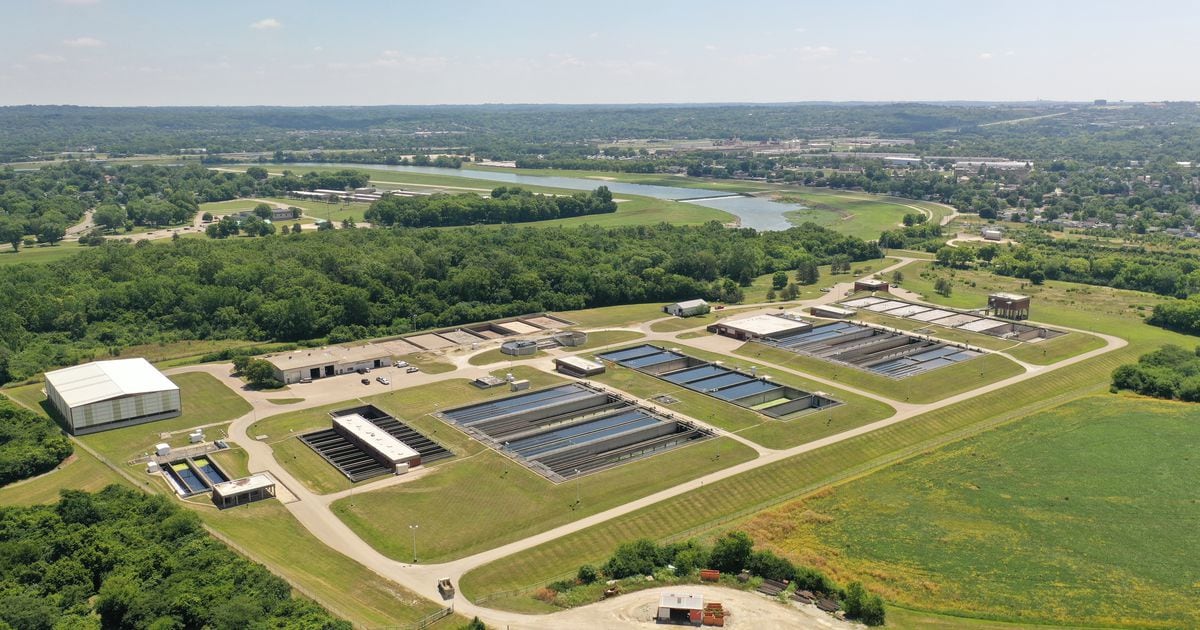Construction of ‘enormous’ $65 million sewer project to ensure continued water security
The county’s sewer system uses multiple screens to filter larger materials. The water then undergoes chemical treatment at the MCES facility and is tested before being discharged into the rivers.
MCES has about 30,000 sewer connections going to WRWRF, the majority of which are routed through the Dryden Road facility, Hilliard said.
Although individual pieces of equipment have been replaced or rebuilt, a significant portion of the equipment is original, he said. Due to the corrosive nature of wastewater, equipment life expectancies can vary from as little as 15 years to 25 years depending on the specific equipment and its application, Hilliard said.
There has never been a complete shutdown of the facility or discharges of untreated sewage, he said.
“We didn’t have a failure,” he said. “If we ever had an outage, if any of that infrastructure goes down, that’s critical because two things are going to happen. Either we’re going to have a problem where the sewage goes straight into the river, or it’s going to cause back-ups in the system, so people’s homes, especially those with basements, we could have back-ups.
While nothing at the Dryden Road facility is considered “defective,” parts of the building have aging equipment that is more expensive to upgrade and maintain than to replace it completely, Hilliard said.
“The building itself requires repairs, such as a new roof, new windows, HVAC upgrades, drywall replacement, electrical upgrades, etc., that require spending money. money for an already aging building,” he said. “MCES performed a cost study on this property, and it was determined that moving our lab downtown would be a better use of taxpayer dollars.”
The project will mean that MCES will abandon the four-storey Dryden Road facilities, but part of the first-floor offices could be redeveloped, he said. The lab there will move to downtown Dayton, Hilliard said.
Performing pretreatment at the WRWRF instead of the Dryden Road facility eliminates the cost of 24-hour staff and some of the maintenance costs, he said. Upgrading the county’s aging pumps protects the system as a whole.
MCES spokeswoman Megan O’Leary said the WRWRF is “a critical point” in the county’s sewer system. Project SMART is a preventative measure to stay ahead of any potential problems, she said.
“Like every other county in America, we face aging infrastructure,” O’Leary said. “In order to continue to provide reliable services to our residents, we must ensure that this will not fail.”
Montgomery County ESC conducted a thorough condition assessment of not only the process equipment, but also the electrical, structural, mechanical, and HVAC systems and found that most of them were nearing the end of their service lives. useful life, Hilliard said. In addition to the condition of the equipment, he also considered the operation and maintenance of the facility when deciding whether to replace existing equipment or build new infrastructure, he said. declared.
Montgomery County commissioners on Tuesday approved a contract with Miami-based Twp. Construction Ulliman Schutte for the design and construction of the SMART project, which is expected to be completed in 2024.
MCES previously accepted sewage at its Dryden Road facility from haulers, residents who have freestanding sludge pits and need to have them emptied regularly.
“These residents are not tied to our sewer system,” he said. “As part of this streamlining process, we are no longer accepting sludge from carriers from April 1.”


Comments are closed.